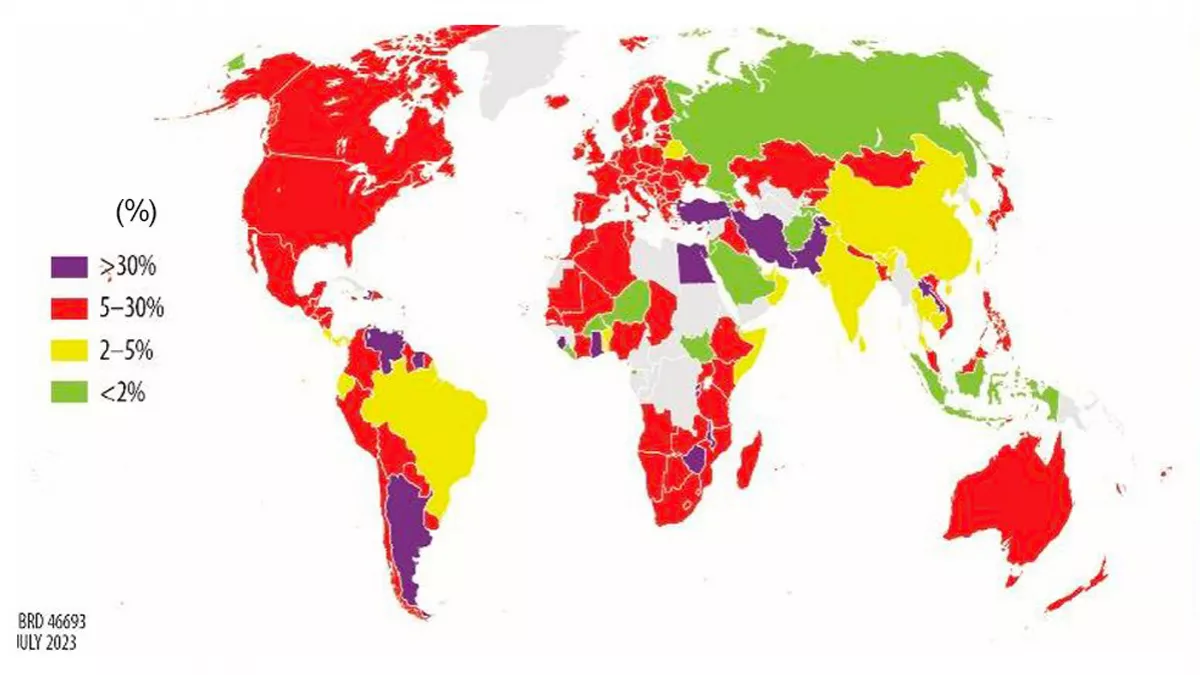World Bank's food security update report for 2023; Qatar’s food price inflation among lowest in the world
24 Jul 2023
News
According to the World Bank's most recent food security update report for 2023, Qatar's year-on-year food inflation was less than 2% between July 2022 and May 2023, ranking among the lowest in the world.
Qatar's food price inflation fluctuated somewhat from July 2022 to May 2023. Qatar's food price inflation was 4.8% in July of last year, and it is expected to fall to -1.5% in May 2023, as per the World Bank's food price inflation tracker. The greatest food price inflation in Qatar was recorded in August 2022, according to World Bank statistics, with Qatar's food price inflation standing at 6.4%, while the lowest food price inflation in Qatar was recorded in February this year, at -1.9%.
According to a World Bank tweet, the nations with the greatest food price inflation were 61.1% low income, 79.1% lower-middle income, and 70% upper medium income. The World Bank also stated that the Organisation for Economic Cooperation and Development (OECD) and Food and Agriculture Organisation (FAO) estimate that for every 1% increase in fertiliser prices, commodity prices rise by 0.2%, highlighting the impact of rising fertiliser costs on agricultural commodities.
The tracker used a traffic light system to represent the severity of food inflation, with red indicating a year-on-year increase of 5 to 30 percent, yellow indicating a year-on-year increase of 2 to 5 percent, and green indicating a year-on-year increase of less than 2 percent. Purple was chosen to emphasise nations with food price inflation rates of greater than 30%.
For the most part, Qatar's colouring was green, suggesting that food inflation was less than 2%. Most African and South American nations with poor and lower middle incomes, such as Burundi, Ethiopia, Malawi, Rwanda, Sierra Leone, Ghana, Haiti, and Zimbabwe, saw the highest food price inflation.
Iran, Lebanon, and Egypt were the Middle Eastern countries with the highest food price increases.
Saudi Arabia, Seychelles, Macao, Hong Kong, and Singapore received green and yellow lights, signifying modest food price inflation.
According to the World Bank, the International Monetary Fund was the primary data source for the food price inflation tracker, which was augmented by Trading Economics.
